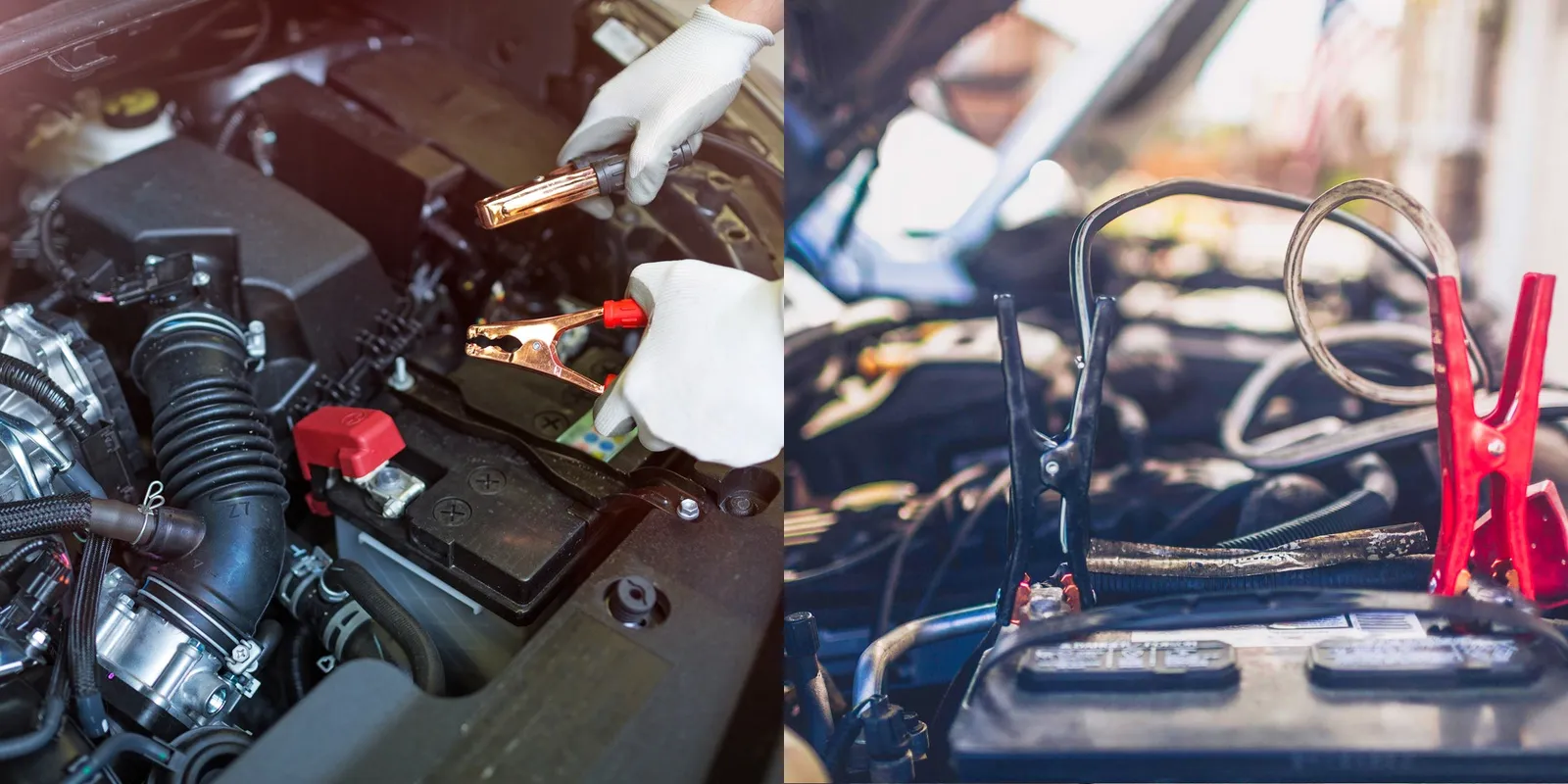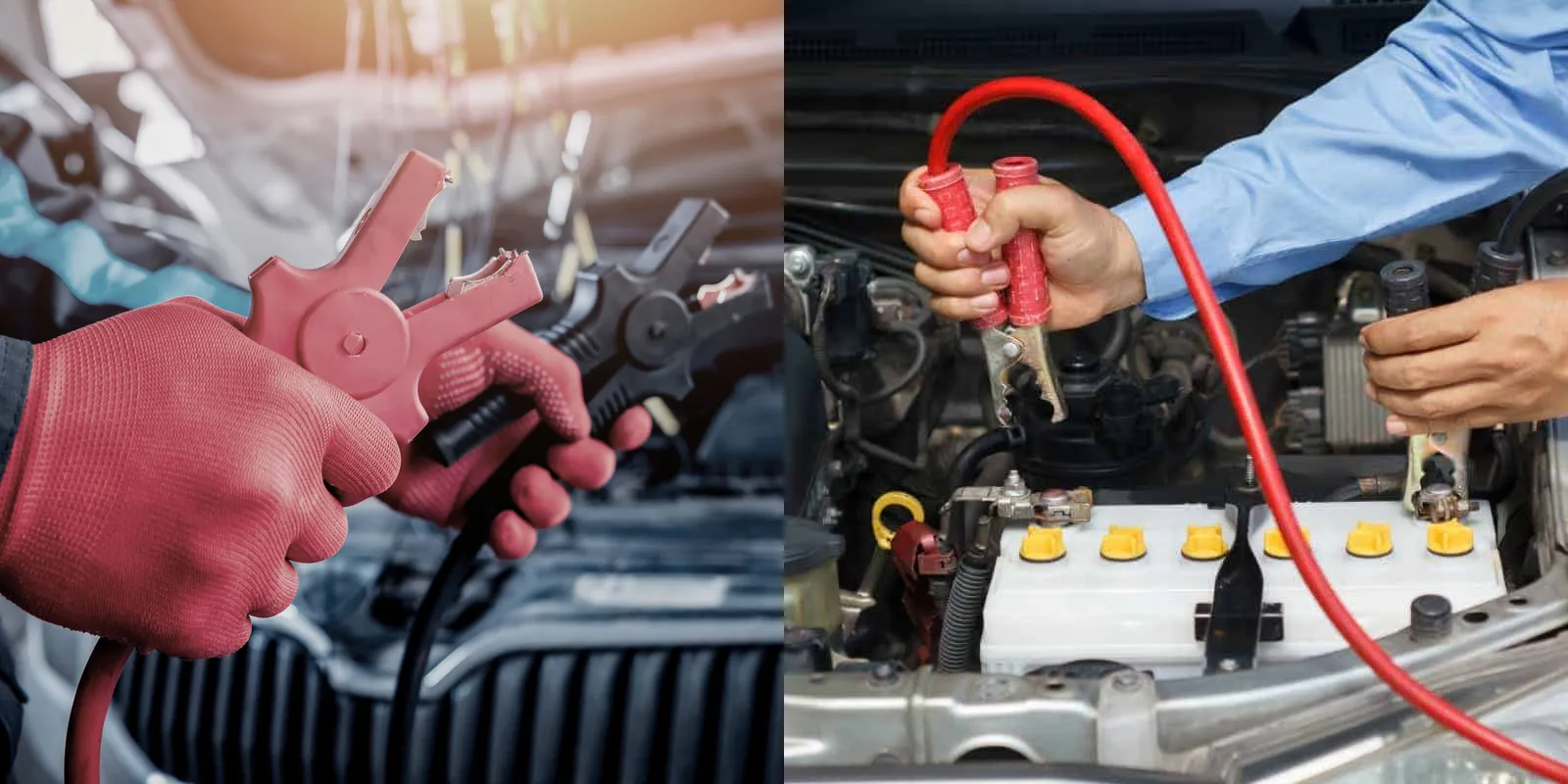Jump starting a car isn’t as difficult as it may seem. With the right set of tools and information, you can easily jump start your car by yourself. In this article, we will show you some useful details to help you jump start a car by yourself. Let’s read this article right now!
Why sometimes car battery dies and why jumps starting is necessary
If you’ve ever tried to start your car by yourself, you’re probably familiar with the feeling of being thwarted by a dead battery. If you’re like most people, you may also be curious about why it sometimes happens and how to fix it. Here’s a brief explanation of why batteries can die and how to fix it if it does.
Batteries work by giving off electricity to run motors. When the battery dies, that power is no longer available to run the motor. If your car has an lithium ion battery, these batteries often give out a “flashing green light” when they start up because this is an indicator that the battery is ready for use again – but it’s not actually running yet.
Step 1: Identify the Issue
It’s not hard to jump start a car by yourself, but there are a few things you need to know in order to be successful. Step 1 is to identify the issue that is causing the car to not start. This can be as simple as a broken bulb or capacitor, or more extensive issues like an out of fuel problem. Once you have identified the problem, it’s easier to find and fix it.
How to determine if the car needs a jump start
It’s that time again, the car is dying on the side of the road and you don’t know where to turn for help. In some cases, jump-starting a car can be done without too much fuss – but in other cases you may need to take some measures before starting the engine. Here are a few tips to help determine if you need to jump start your car:
- Make sure your car has an automatic fuel pump – these pumps will automatically start your engine when they detect a low battery. If your car doesn’t have this feature, you’ll need to go ahead and buy one.
- Check the fluid levels in your tires – if they’re low, it’s likely that your battery is weak and needs to be replaced or jumped.
Step 2: Safety First
Important safety measures before jump-starting a car
If you are considering jump-starting a car by yourself, it is important to take some safety measures before doing so. Here are a few tips:
- Make sure your car has been properly prepared by being washed and vacuumed. This will remove any dirt or grit that may be on the engine or chassis.
- Be sure to have all of your tools and supplies available before starting the car. This includes jumper cables, an editor, a wrench set, and a spray bottle of cleaner.
- Be sure to stay calm and organized while jump-starting the car. Doing this will help you avoid any potential problems down the road.
- Always wear protective gear when working with power tools and materials.
Instructions for using safety equipment
Instructions for using safety equipment are important if you are going to jump start a car by yourself. You should always have the following items with you when you jump start a car:
- A battery charger
- A spark plug
- A wrench
- A safety goggles
- An air compressor
- Fire extinguisher
When starting a car, always follow these instructions:
- Connect the battery charger to the car’s outlet.
- Put on your safety goggles and air compressor coverings.
- Take off your boots and wide mouth visor before entering the car.
- Put on your spark plug wrench and air compressor handle coverings if needed.
Step 3: Identify the Car Battery
How to locate your car’s battery
Your car’s battery can usually be found under the hood of the vehicle. It will be clearly identified with a label and will typically be in the front near the firewall of the vehicle. Depending on the make and model of your car, it may be located in a different spot.
What to do if you need to access the battery
If you need to access the battery, it’s important to do so safely. Before attempting to jump start your car, make sure that the engine is off and that all of the accessories are off. You should also make sure that you have the proper tools for the job — jumper cables, a pair of safety goggles, and gloves. It’s also important to ensure that your car is parked in a safe area with plenty of space for maneuvering around it.
Once you’ve made sure the area is safe, locate your car’s battery and check its condition. If it looks corroded or damaged in any way, don’t attempt to jump start it yourself and take your car to a professional instead. Once you’re certain everything is in order, use the jumper cables to connect one end of each cable to the positive (+) and negative (-) terminals on both batteries. Make sure that they are securely connected before starting your car.
Step 4: Connecting Jumper Cables
What you need to do to start the engine
If you’ve ever had a dead car battery, you know how frustrating it can be. Fortunately, there is a way to jump start the engine and get your car back on the road. With the right tools and some basic knowledge, you can jump start a car by yourself in no time.
The first step is to make sure that both cars have their parking brakes engaged. Next, connect the jumper cables to each vehicle’s battery terminals. The red cable should be connected to the positive terminal of one battery, then connected to the positive terminal of the other battery. The black cable should be connected to the negative terminal of one battery, then connected to an unpainted metal surface on the other vehicle.
Once the cables are attached correctly, turn on both vehicles and let them idle for a few minutes before attempting to start your car. If all goes well, your engine should start up after a few tries. After starting your car, let it run for at least 15 minutes before disconnecting the jumper cables so that it can charge its own battery.

Step-by-step guide on connecting jumper cables
Jumping a car is one of the most common roadside assistance tasks, and it’s also something that you can do yourself with the right tools and knowledge. Here’s a step-by-step guide on how to jump start your car by yourself.
- First, make sure you have all the necessary tools: jumper cables, another vehicle with a working battery, and gloves for safety. Once you have these items, park both cars close together but make sure they don’t touch each other. Turn off both engines and open the hoods of both cars.
- Next, locate the batteries in both vehicles. On most cars, they are located near the front of the engine bay. Connect one end of the red (positive) jumper cable to the positive terminal on your dead battery. Connect the other end of the red cable to the positive terminal on the working battery.
- Do this for both negative (black) cables as well. Once you’ve connected all four cables properly, start up your helper car and let it run for a few minutes while keeping its engine revved slightly higher than idle speed.
Advice on getting the engine running as quickly as possible
If you find yourself in a situation where you need to jump start your car, it can be intimidating and overwhelming. Fortunately, with the right knowledge and tools, you can easily jump start your car by yourself. Here are some tips on how to jump start a car quickly and safely:
- First, make sure that both cars have their engines off and the keys removed from the ignition. Then open both hoods and connect the jumper cables in the correct order: red to positive terminal of dead battery; black to negative terminal of good battery; black to negative terminal of dead battery; red to positive terminal of good battery. Make sure that all clamps are securely connected.
- Once the cables are connected, start up the working vehicle first and let it run for a few minutes before attempting to start up the dead vehicle. This will allow enough time for power from the working vehicle’s battery to charge up the dead one.
- After a few minutes have passed, try starting up the dead vehicle. If it doesn’t start right away, wait a few more minutes before trying again. It may take several attempts before it starts up successfully so be patient! 4. Make sure that all clamps are securely disconnected before closing both hoods.
Step 6: Disconnect Jumper Cables
Precautions to take when disconnecting the jumper cables
When disconnecting the jumper cables, it is important to take the following precautions:
- Make sure that all equipment is off before disconnecting the jumper cables. This includes appliances and vehicles.
- Disconnect the jumper cables at an appropriate time and place so that they do not cause any damage or injury.
- Be careful when disconnecting the jumper cables as they may be live and could strike something if mishandled.
Final steps to ensure the car restarts successfully
Starting a car by yourself can be a daunting task, but with a few final steps, it’s easy to get the car going again. Here are some key steps to ensure your car starts successfully:
- Unplug all cords from the vehicle. This will help save power and ensures the car is free from potential problems down the road.
- Check for any weird or abnormal behaviors and signals on the dashboard. If there are any changes, this could be a sign that the battery is low or there’s something else wrong with the car.
- Remove all items from inside the car- including anything that’s not essential to driving- and place them in a nearby trash can or recycling bin. This will help ensure that everything is clean and organized when you start up the car next time.
Additional advice on protecting your car’s battery
If you’re ever stuck in a traffic jam and your car’s battery is about to run out of juice, there are a few things you can do to jump start it.
- Make sure that your car has a valid battery license plate and registration. If not, get them either before or after you go to the mechanic to get the necessary documentation.
- If your car doesn’t have a manual transmission, try using the electrician’sCockpit Key or keyless Entry system. These systems require no external power and often work better than trying to push the gas pedal.
- Finally, if all of these methods don’t work or you just feel like trying something new, try using an electric drill.
The End
Once your car is running, remember to turn off the jumper cables and drive around for a few minutes to help charge the battery. With the proper safety precautions and tools, you can easily jump start your car by yourself.
